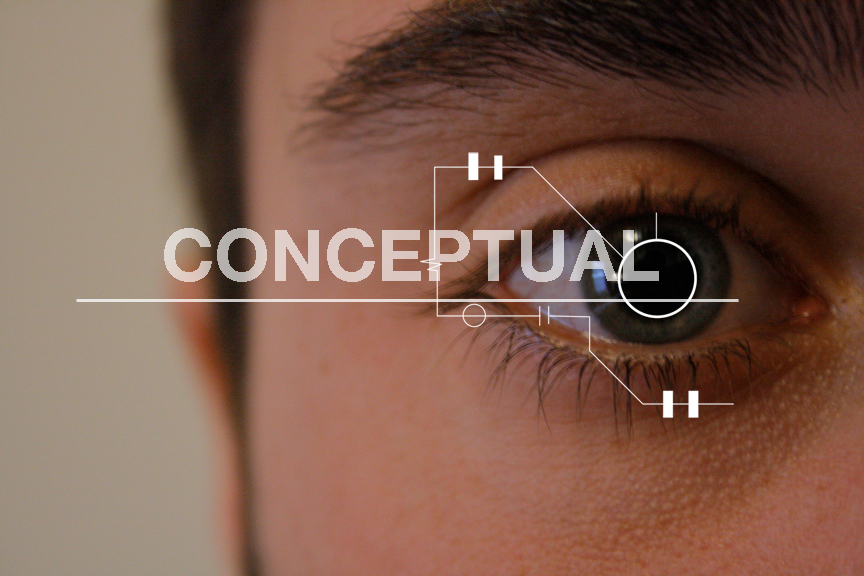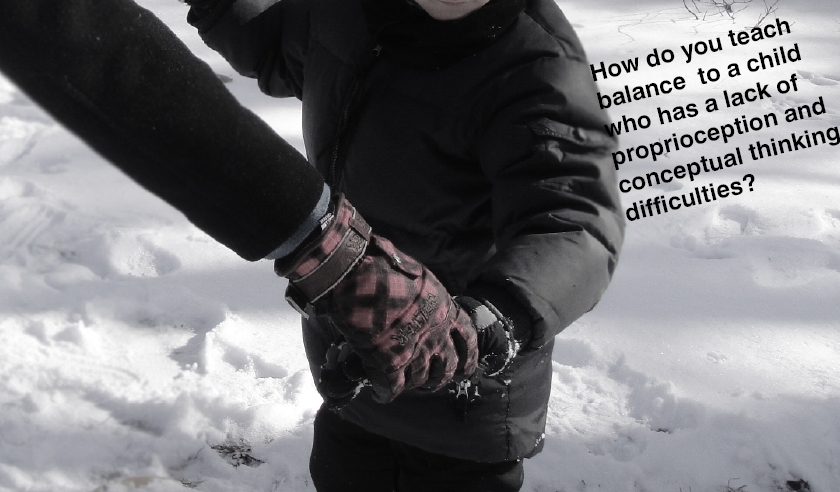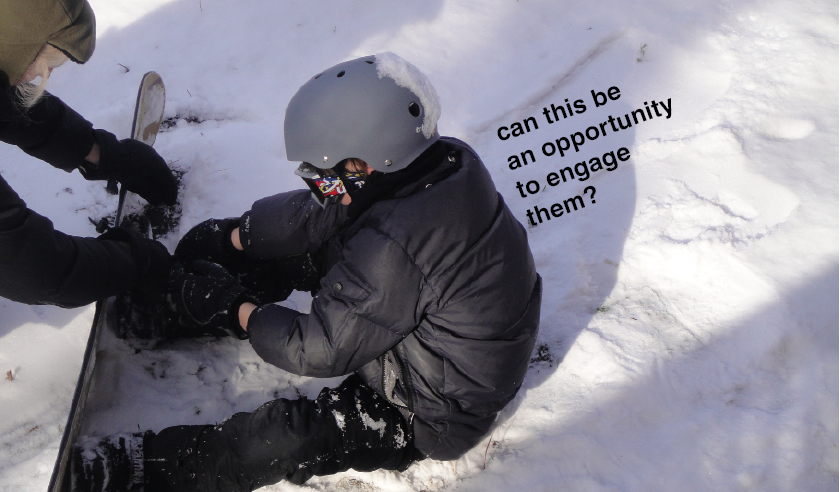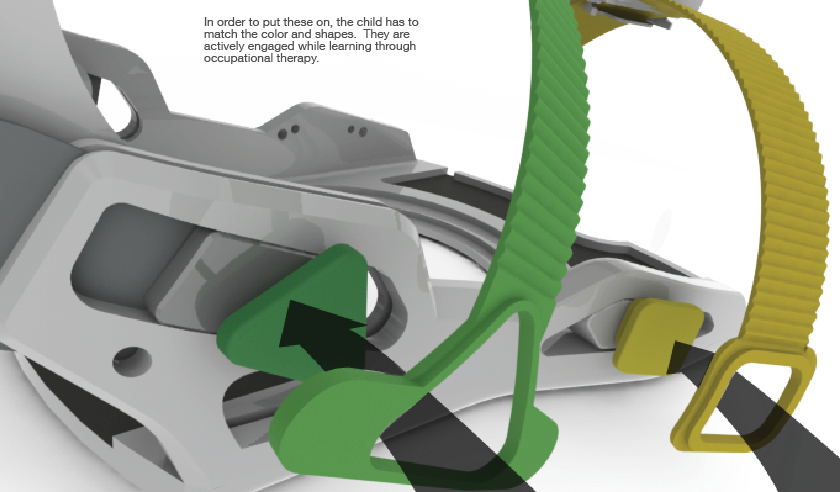
AUTISM+SNOWBOARDING
This one year long thesis project sought to invent snowboard gear to help engage, teach and encourage children with Autism to snowboard. This project was entered into the Core77 Autism connects compeition, where it placed in the top 15.
PREFACE
Snowboarding can be a very good activity for children who have Autism. It helps strengthen self-awareness and coordination. It can help with social communication skills. Most of all, it gives a sense of accomplishment. Snowboarding is a sport with no leagues or teams. There are no losers. There is no pressure to out-perform or dominate over another.
GOALS
-Understand the needs and difficulties that children who have Autism face when learning new things
-Understand how they are currently being instructed and engaged in new activities
-Create a series of objects that aid with instructing that are congruent with current teaching methods.
UNDERSTANDING AUTISM
People who have Autism face several challenges with varying degrees of severity.




SENSORY Many children with Autism have varied sensitivity to different factors. Some will be hyper sensitive to light and hypo-sensitive to sound and others will be the opposite. The main reason for this is because of the way their brains interpret stimuli. Autistic people also are known for thinking visually. Pictures, in many cases, are better learning tools than words or descriptions. This is because they are literal and do not require the extra step of analyzing an implied meaning.
Many children with autism have hypersensitivity to touch senses. Because of this, many enjoy playing with sand, water or furry textures to calm their senses through desensitizing. On the negative side, clothing that is heavy and warm will upset children if they are not desensitized prior to putting these articles on.
SOCIAL
Children with Autism often have impairments with their social skills. They may have anxiety and nervousness when it comes to social situations and social stimulation. Many of them have trouble communicating wants and needs. They are often reported having one-way conversations and avoiding eye contact with those they are speaking with.
PROPRIOCEPTION
Proprioception is the minds ability to sense where the body is in space during an activity. Children with autism generally have problems with this and are constantly trying to move to define where their bodies are through muscle movements. They find comfort from this by placing pressure on their bodies. This allows them to feel where their bodies are in space. Many of them have weighted backpacks or things that wrap around them. Many also have nervous habits
Many children have OCD displays of touching limbs together to gain an understanding of where they are in space. Studies show that these displays are sometimes used to strengthen their brains’ proprioceptive awareness in cases where visual and auditory stimuli are becoming misinterpreted by the brain.
CONCEPTUAL
It is easy for children with autism to follows rules and extremely hard for them to learn when it is ok to break them. It is also difficult for them to conceive new categories of things that they have not seen. They also tend to become extremely interested in one category and ignore the others. They tend to learn best with concrete visual examples.
Observation
I observed and taught at an adaptive ski school at Toggenburg in upstate New York.

Questions Asked



SOME CURRENT THERAPIES
Occupational Therapy: Using color and shape matching games to engage and activate certain parts of the brain and exercise conceptual thinking
Sensory Integration: Physical play that stimulates proprioceptive responses in the brain. This could be any type of movement that helps the child to feel where they are in space better.
Picture Exchange Communication: Using cards and pictures to communicate complex ideas. This communication style is great for children who are non-verbal. They can use concrete images to convey their thoughts without the pressure of using speech.

SO WHERE DOES ALL THIS LEAD TO?
PRODUCTS THAT ENABLE CHILDREN TO SNOWBOARD
Learning Boot
The first object to come out of the research is the Learning Boot. It is intended to help develop the proprioceptive skills, the communication skills and the independence of the child.
INTEGRATED SOLE
The sole of the boot's inner lining has toe and heel chambers with prodding plastic spikes. The center of the sole acts as a fulcrum for foot to rotate over. This is to prod the user's foot when they are in heel-side or toe-side position. This provides physical stimuli that, in turn, helps the rider know which side they are on. This also gives the instructor a tangible feeling they can refer to when teaching a rider about toe-side and heel-side.
VISUAL SEPARATION
The heel-side and toe-side are colored black and white, primarily. This helps the instructor refer to which side they should lean towards while teaching.
LACING SYSTEM
The lacing system uses a hybrid of the Occupational Therapy learning technique. Shapes and colors are matched in order to lace the boot up. It is then pulled snug with a large handle at the top. The integrated tongue/lacing means that there are no confusing laces all over the place.



Learning Binding
The second object to come out of the research is the Learning Binding. It follows the same guidelines as the boot and is intended to help develop the independence of the child by allowing them to strap into their bindings on their own.
OCCUPATIONAL THERAPY
Colors and shapes are matched from the strap to the congruent shape and color on the side of the binding. This method of instruction is used throughout the Autism care industry to teach and enforce thinking strategy and word reference recognition.
LESS NOISE
A single strap pad made strapping in easier. without all of the visual noise, the child can concentrate on the task at hand.
INTEGRATED HANDLE
The back strap includes a handle for the rider to hold onto as they step into their binding. This works well for someone who has problems with balance.



APPEARANCE MODEL



